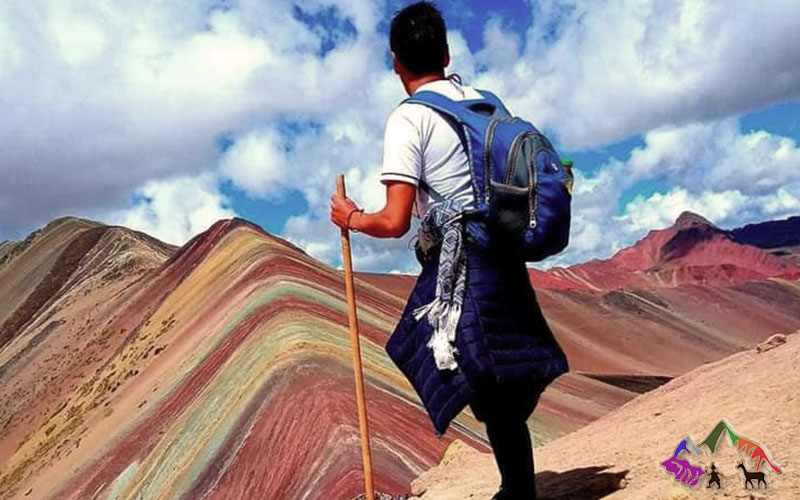
Located just over 100 kilometers south of the city of Cusco, Rainbow Mountain —also known as Vinicunca or the Mountain of Seven Colors— rises majestically to 5,200 meters (17,060 ft) above sea level. It sits in the heart of the Vilcanota mountain range, between the districts of Pitumarca and Cusipata.
Since its tourism discovery in 2015, this colorful destination has seen a rapid rise in popularity. In just two years, it went from receiving a few dozen visitors per day to welcoming over 1,000 tourists daily, becoming a must-see stop for travelers in Peru.
The impact was such that, in August 2017, travel portal Business Insider included Rainbow Mountain in its prestigious list of “100 places to visit before you die.”
Authorities Overseeing Rainbow Mountain
Due to its growing popularity and to ensure a safe and sustainable experience, various Peruvian institutions are working to regulate and protect the natural surroundings of the mountain.
The Regional Directorate of Foreign Trade and Tourism (DIRCETUR Cusco) is the entity responsible for preserving the landscape, controlling visitor flow, and protecting the wildlife of the mountain range.
The municipalities of Pitumarca and Cusipata are also actively involved in monitoring tourism agencies and ensuring compliance with regulations. They promote a respectful and harmonious relationship among locals, tour operators, and travelers.

Principles of Sustainable Tourism in Rainbow Mountain
To protect this natural treasure and ensure it can be enjoyed by future generations, a series of fundamental principles of sustainable tourism guide all activities in the area:
- Protection of natural resources: All mining activity around the mountain is strictly prohibited. Vinicunca is considered an intangible national asset.
- Conservation of natural heritage: The mountain is a non-material heritage site. Climbing to its summit or walking directly on its surface is prohibited to prevent damage.
- Support for the local economy: Tourism creates business opportunities for rural communities, artisans, local guides, and food producers.
- Respect for Andean culture: Visitors are encouraged to engage harmoniously, valuing the ancestral knowledge, traditions, and customs of the native communities.
- Visitor capacity control: Efforts are made to avoid over-tourism and reduce environmental impact by respecting daily visitor limits.
Tourism Vision for Vinicunca by 2030 and 2040
Local and regional authorities have set a long-term vision to establish Rainbow Mountain as a model for sustainable tourism in Peru and globally:
By 2030:
Tourism at Rainbow Mountain will ensure conservation and responsible use of natural resources.
Cusco will be recognized as a global benchmark in sustainable tourism, with fair distribution of economic and social benefits among local communities.
By 2040:
DIRCETUR will guarantee biodiversity preservation through training programs for both residents and visitors.
The protected natural areas of the Vilcanota mountain range will be designated as intangible conservation zones, managed in coordination with all levels of government.
The ultimate goal is to ensure that future generations can continue to enjoy the magic and colors of Vinicunca.
Strategies for Sustainable Tourism at Rainbow Mountain
To achieve these goals, concrete strategies are being implemented at both regional and national levels:
- Promotion of nature-based tourism within Peru and in international markets.
- Innovation in tourism offerings that align with the needs of local communities and the area’s cultural identity.
- Modernization of tourism infrastructure in key towns such as Cusipata, Pitumarca, and nearby villages.
- Support for social and tourism entrepreneurship, especially projects led by Indigenous or rural residents.
- Development of sustainable tourism projects that create jobs, income, and local development.
- Widespread promotion of responsible tourism through digital media and awareness campaigns targeting tourists, authorities, and tour operators.
In Summary…
Rainbow Mountain is not just a photogenic destination or a viral sensation on social media. It is also a symbol of Peru’s commitment to responsible tourism. Visiting it means admiring its beauty, but also protecting and respecting it, understanding that its value lies not only in its colors, but in its living culture, biodiversity, and the collective effort to conserve it.


